Browse Houses
Search Results: Returned 5516 records. Displaying results 4101 – 4200
| House name | Description | |
|---|---|---|
| Newforest | Built prior to 1777, Wilson refers to it as the seat of Mr. D'Arcy in 1786. It was held in fee by Richard D'Arcy at the time of Griffith's Valuation when it was valued at £24. It was demolished in the latter half of the 20th century. |
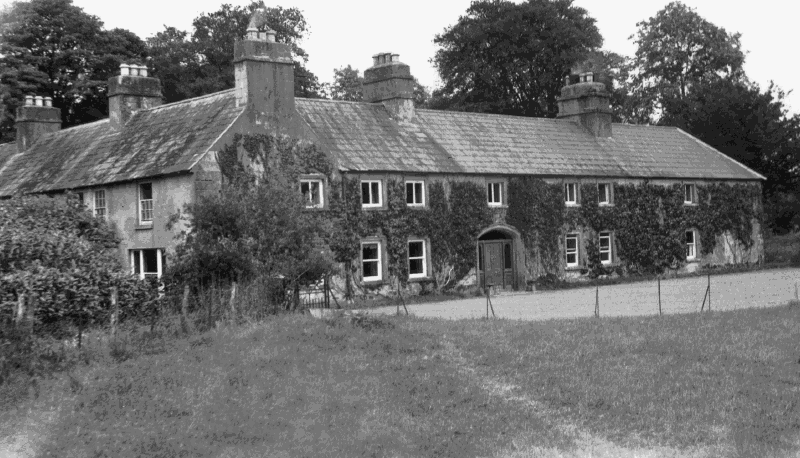
|
| Newgarden | The home of Edward Burton, Rector of Annaghdown and Vicar General of Tuam in the latter part of the 18th century. Occupied by Mrs Smith in 1814, in the 1830s by Roderick O'Connor and in the 1850s by Richard Jennings. In the Ordnance Survey Name Books it is decribed as a pretty lodge, the residence of the proprietor Lieutenant Daniel Smith. A modern house and some old farm buildings are still visible at the site. |
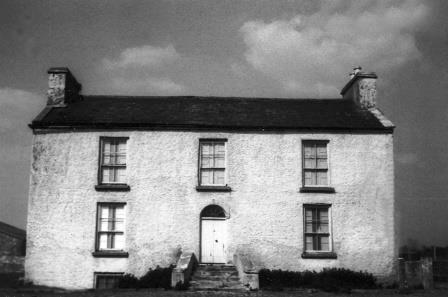
|
| Newgarden | Hugh Ingoldsby Massy is recorded as "of Newgarden" in 1769 and Simon Purdon was resident in the late 1770s and 1786. The widow of Hugh Ingoldsby Massy married Simon Purdon of Tinerana. The Powells of Clonshavoy were located at Newgarden in the early 18th century. A house occupied by William Ryves in 1814 and by Massy Ryves in 1837. By the time of Griffith's Valuation it appears to have fallen into decay. John Dooley occupied a house valued at £1 and Eyre Lloyd held offices valued at £4 from the Earl of Clare. Caleb Powell states that this house was taken down by Eyre Lloyd. | |
| Newgrove | Home of the Browne family in the 18th century and for the first half of the 19th century. In the 1850s this 18th century house, valued at £30 was in the possession of Eliza Browne, widow of Thomas Browne of Newgrove who died in 1847. Mrs Browne died in 1864 and the house and estate passed to the Brady family. Only some walls of the house remain. |

|
| Newgrove | This locality was in the possession of Blayney Owen described as ‘of Newgrove’ in the early 18th century. In the 1830s, Lewis records M. Hawkshaw as resident at Newgrove, located on the Lucas estate. By the early 1860s Thomas C. Sterne was the occupier when the buildings were valued at £8.10.0. Home of the Wilson family in the early 20th century. | |
| Newgrove House | In 1786 Wilson refers to Newgrove as the seat of Mr. Blake. At the time of Griffith's Valuation, the property is described as a care-takers house, and leased to John H. Blake by the Wallscourt estate. It is labelled Newgrove House on the 1st edition Ordnance Survey map but is described as "in ruins" on the later 25-inch map of the 1890s. | |
| Newhall | The original house was bought from the O'Briens by Charles MacDonnell in 1764 who greatly extended the property building on a new front, probably designed by Francis Bindon. Occupied by Robert and Florence Vere O'Brien in the 1890s though Slater notes it as a seat of Charles R.A. MacDonnell in 1894. A home of the Joyce family of county Galway in the 20th century. It is still extant and in 2013, was offered for sale. |
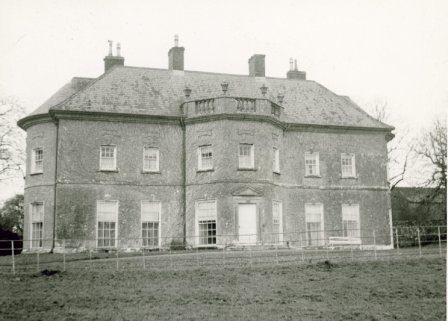
|
| Newhill | A property belonging to the Going family in the late 18th and 19th centuries. Newhill was the home of James Going in 1814 and of John Thomas Going, son of Samuel Murray Going, in the mid 19th century. The buildings were valued at £18.12 shillings at this time and held from Christopher Donville. Newhill passed to John Thomas Going's sister Mary Braddell who was resident in 1906. | |
| Newlawn | Originally a Carroll home that passed through marriage to the Dempsters. The Ordnance Survey Name Books mention J.Dempster as the proprietor of Newlawn in 1839 though elsewhere they refer to it as the residence of Mr. Egan, distiller. In the mid 19th century David Dempster was the occupant holding the property from Dr Dempster, the buildings were valued at £13.15 shillings. The building is still in use as a house. |
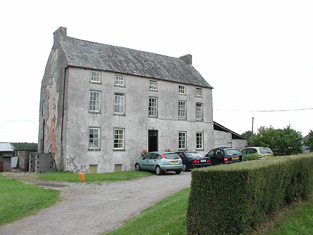
|
| Newmarket House | Home of a branch of the Studdert family in the 19th century. It was described by Lewis in 1837 as the "spacious mansion of C. Studdert". It was occupied by his widow Maria at the time of Griffith's Valuation. She held the property from Lord Inchiquin and it was valued at £25. Sold by the Studderts at the beginning of the 20th century. | |
| Newmarket House | Smith refers to the "stately house of Boyle Aldworth" on the south east side of the town in 1750. Lewis refers to Mr Aldworth's lodge in Newmarket. Newmarket was the seat of the Aldworth family held by Richard O. Aldworth in fee and valued at £56 in the mid 19th century. Valued at the same amount in 1906 it was the home of Major Richard Aldworth. In 1943 the Irish Tourist Association Survey mentions that the family went to live in England during the Anglo-Irish war and that the house was occupied by Crown forces and later by the Free State Army. According to the survey it was bought by the Sisters of St. Joseph in 1927. Newmarket House is still extant and now known as the James O'Keeffe Memorial Centre. |

|
| Newmills | Matthew Nelson was leasing this property from the Macky estate at the time of Griffiths Valuation in the 1850s, when it was valued at £33 and included a milling complex. | |
| Newpark | At the time of Griffith's Valuation Newpark was being leased by Jemmet Duke from Robert Duke and was valued at £25. Lewis recorded it as the seat of Robert Duke in 1837. McTernan notes that it passed by sale to Richard Edward O'Hara of the Annaghmore family in 1913. The house is still extant and occupied by his descendents. |

|
| Newpark | At the time of Griffith's Valuation, Peter Callanan occupied a house valued at £10 in the townland of Skecoor, parish of Kiltormer, barony of Longford. Lewis records this house as the seat of P. Callaghan in 1837. In 1894 and 1906 it was the home of Rosa Callanan. Now known as Skycur House it is still extant and well-maintained. |
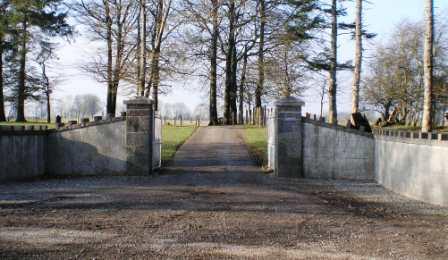
|
| Newpark | The Ordnance Survey Name books state that the townland was the property of John Nolan of Prospect, Gort in the 1830s. The house appears to have been built after that time. At the time of Griffith's Valuation, this property was leased by John Nolan to Andrew Nolan. In 1906 it was still the property of Andrew Nolan and was valued at £17. It is no longer extant. | |
| Newpark | This house was built in the mid 18th century by the Hickman family. By 1814 it was been leased to the Mahon family who included James Patrick 'The O'Gorman Mahon', associate of Daniel O'Connell. Occupied by William Mahon who held it from Thomas Persse in the mid 19th century. Purchased by the Barron family in the early 20th century. The house now provides guest accommodation. see http://www.newparkhouse.com/newpage1.htm |
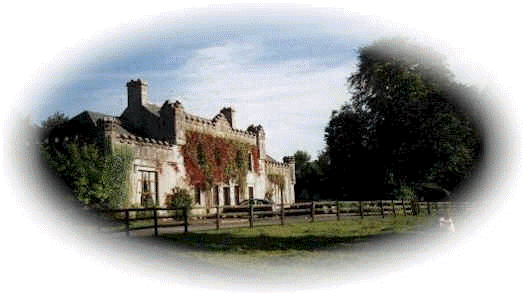
|
| Newpark House (Waterford) | In 1849 the representatives of Sir John Newport were leasing Newpark House to William Fitzgerald, when it was valued at £75. The estate sale notice of 1856 includes a lithograph of the house which is described as "large, commodious and in excellent order". In 1885 Walford mentions Newpark as the seat of Fitzmaurice G Bloomfield while in 1894 Slater refers to it as a residence of Herbert Godfrey Bloomfield. Wilson, writing in 1786, refers to New Park, as the seat of Simon Newport. This house is no longer extant. | |
| Newport Corn Mill | Thomas and William Manning were leasing a house and extensive mill property from Simon Newport at the time of Griffith's Valuation. The complex was valued at £31. On the later 25-inch Ordnance Survey map it is labelled Brook Lodge Mill. It is no longer extant. | |
| Newport House | In 1786 Wilson refers to a house at Newport which was the seat of Sir Robert Waller. This may be the property labelled "site of Newport House" on the 1st edition Ordnance Survey map. In 1840 the Ordnance Survey Name Books refer to the the site of a house "formerly the residence of the late Sir Robert Waller. It is now nearly altogether taken away". | |
| Newport House | Built in the late 18th century, this house was the main residence of the O'Donels in the 19th century. It now functions as a hotel. |

|
| Newrath House | A house later associated with the Morris family. At the time of Griffith's Valuation, Newrath seems to have been occupied by Amelia Hobbs, leasing from the Corporation of Waterford. The house was valued at £32. It is still extant and in 2012 the house was offered for sale. |
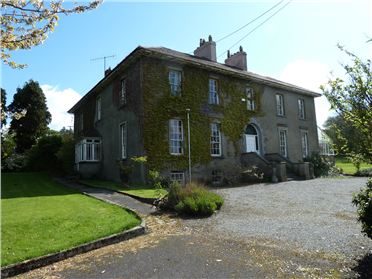
|
| Newtown | Hajba dates this house from 1749 when it was built as a hunting lodge for the Courtenays. Described by Lewis in 1837 as the seat of Robert Courtney, John Culhane was resident by the time of Griffith's Valuation, holding the property from John Courtnay. The buildings were valued at £13. In 1943 the Irish Tourist Association Survey noted that it was then the home of the Culhane family. The house was demolished in the 1960s. | |
| Newtown | The seat of the Knight family in the 18th century now demolished. Wilson refers to Newtown as the seat of Mr. Knight in 1786. This house was occupied by Michael Connor in the early 1850s, valued at £8 and held from Mrs Eliza Sealy. A later house now stands on the site. | |
| Newtown | The home of the Kelly family in the 19th century, sold to Major Frederick Carr in the early 1930s and sold again in the late 1960s. The house has had a number of owners in the intervening years and is well maintained. It was offered for sale in 2007. |
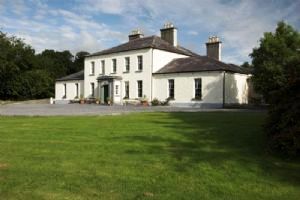
|
| Newtown | John Burke, a gentleman, was living at Newtown in 1749. Valued at £4 in the mid 1850s. The property seems to have disappeared by the time of the 25-inch Ordnance map of the 1890s. | |
| Newtown | Newtown House situated on the Massy estate was the home of the Walsh family for most of the 19th century. At the time of Griffith's Valuation it was occupied by the Reverend Richard S. Welsh and was valued at £20. It is now a ruin. | |
| Newtown | Originally an Irwin property, bought by the Brownes in the 18th century. Held by the Very Reverend Henry M. Browne at the time of Griffith's Valuation and occupied by Henry Farmer. | |
| Newtown | Newtown House was inherited by the Nasons through marriage with a Harrison heiress in 1716. It continued to be the main seat of one branch of the Nason family until the end of the 19th century. Still in Nason occupation in 1906 when the buildings were valued at £13. Only some ruined walls now remain. | |
| Newtown (Bantry) | Held in fee by the Earl of Kenmare's estate in 1852 when it was valued at £8 5s. Lewis refers to it as the seat of M. Murphy in 1837. There is still an extant house at the site. | |
| Newtown Anner | The seat of the Osborne family, held by R.B. Osborne MP in fee in the mid 19th century when the buildings were valued at £56+. Inherited by 12th Duke of St Albans, grandson of R.B. Osborne. Occupied by the Duchess of St Albans in 1906 and still in this family's possession in the early 1940s. The Irish Tourist Association survey states that the Osbornes bought the property from Clonmel Corporation in 1774. The National Inventory of Architectural Heritage dates this house 1829. It continues to be in use as a residence. |
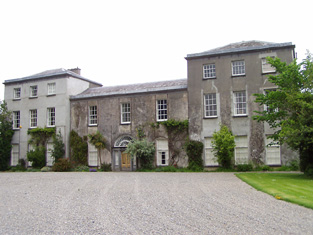
|
| Newtown Castle | Newtown Castle was originally the home of the O'Loghlens of the Burren and Lewis records C. O'Loghlen resident there in 1837. By the time of Griffith's Valuation it was part of the estate of Colonel Henry White, later 1st Baron Annaly. The present house was a rectory at the time of Griffith's Valuation inhabited by Reverend Hugh B. Howlett. The original castle is still extant and the Burren College of Art is now located at this site. | |
| Newtown Geneva | In 1848, John Dobbyn was leasing the site known as Geneva Barracks from Lord Waterford's estate. The barracks is described as "in ruins" on the First edition six-inch Ordnance Survey Map of the 1840s. It had been constructed at a site originally intended for a colony of disaffected artisans from Geneva in Switzerland. When this plan was abandoned it was commissioned as a military barracks and used as a prison during the 1798 rebellion. The building was purchased by Lord Waterford in the 1820s. The ruins of a farmhouse as well as extensive perimeter walls remain at the site. |
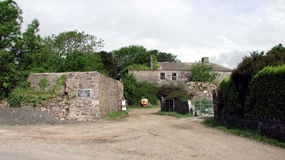
|
| Newtown Glebe | Rev. Edward Daulton was leasing this property from the O'Neill-Power estate in 1850 when it was valued at £14. There is still a house at the site. | |
| Newtown Glebe | Newtown Lodge was occupied by Anthony Dignam in 1814 and the Glebe House at Newtown, valued at £18, was occupied by Reverend Joseph Morton at the time of Griffith's Valuation. It was leased from the Pakenham-Mahon estate. It is still extant. | |
| Newtown Glebe | ||
| Newtown Glebe | Rev. Edward Daulton was leasing this property from the O'Neill-Power estate in 1850 when it was valued at £14. There is still a house at the site. | |
| Newtown House | In 1786 Wilson refers to Newtown as the seat of Mr. Ellard. Occupied by Miles Ryan in 1814 and by Richard Ellard at the time of Griffith's Valuation. Ellard held the property from - Keating and the buildings were valued at £13. Lewis refers to Newtown Ellard as the ancient seat of the Lloyd family. In 1906 this house valued at £23.10 shillings was occupied by Mary R. Ellard. It is still extant. |
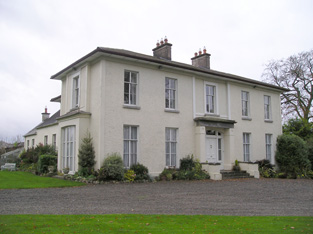
|
| Newtown House (Kinsalebeg) | Built after the first Ordnance Survey, Michael Kennedy was leasing this property from the Smyth estate in 1851 when it was valued at £13 10s. It is noted on the 25-inch Ordnance Survey Map as Newtown House. There is still an extant house at the site. | |
| Newtown House (Tramore) | Leased by Edward O'Neil-Power from Viscount Doneraile's estate at the time of Griffith's Valuation, when it was valued at £36.In 1814 it was the residence of Joseph Power. The house was sold to Pierce Power of Carrickbeg in 1858. It is still extant and occupied. |
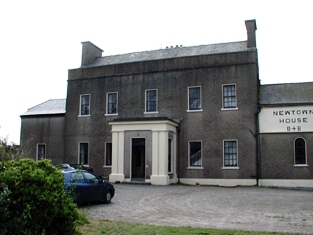
|
| Newtown House (Waterford) | At the time of Griffith's Valuation, Eaton Edwards was leasing this property to James Aylward, when it was valued at £28 10s. The site now appears to be occupied by a building known as Farmlea. | |
| Newtown Kilcolgan | Arthur St.George was leasing a house, valued at £8, at Newtown Kilcolgan, from Christopher St.George in 1855. Evidence of estate buildings still survive in this area though the house appears to be gone. | |
| Newtown Lodge | Another Nason residence, occupied by Henry Nason in the mid 19th century and held from John Nason, the buildings were valued at £21. It remained in Nason possession until the early 20th century. This house is still a family residence. |
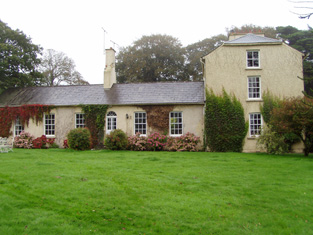
|
| Newtown Lodge (Tramore) | Leased by John H.Barry from the O'Neill-Power estate in 1850, when it was valued at £18 15s. There is still an extant house at the site. | |
| Newtown Lynch | O'Connell states that Newtown was built around 1795. At the time of Griffith's Valuation the townland of Doorus Park was part of the estate of Patrick Lynch of Renmore. John W. Lynch is recorded as the owner of this mansion house, valued at £13, in 1906. On the Ordnance Survey maps it is labelled Newtown House. It has been in ruins since the 1930s. |

|
| Newtown Manor | A house built after the publication of the First Ordnance Survey map. John James Whyte held this property in fee at the time of Griffith's Valuation, when itwas valued at £12. Slater notes that it was the residence of Captain Edward T. Pottinger in 1894. In 1906 Charles B. Whyte was the owner of the house at Carrickfad valued at £22. It is no longer extant. | |
| Newtown Park | Built by John Evans, younger brother of Ralph Westropp Evans, in 1847. He is recorded as the occupant at the time of Griffith's Valuation, holding the property from his first cousin, Nicholas Evans. The buildings were valued at £15. The house was later extended by Nicholas Evans. Still extant and occupied. |
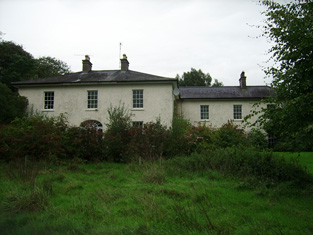
|
| Newtownhill Cottage | In 1850 Edward Popham was leasing this property from Edward O'Neill-Power when it was valued at £13 10s. | |
| Nicholastown Mill | Beresford Power was leasing this property to Walter Collander at the time of Griffith's Valuation, when it was valued at £11. The ruin of the building still remains at the site. | |
| Nile Lodge | Nile Lodge is associated with the O'Hara family though at the time of Griffith's Valuation, it was leased by Edward C. Burke from Mark Lynch and valued at £35. It is still extant and occupied. |
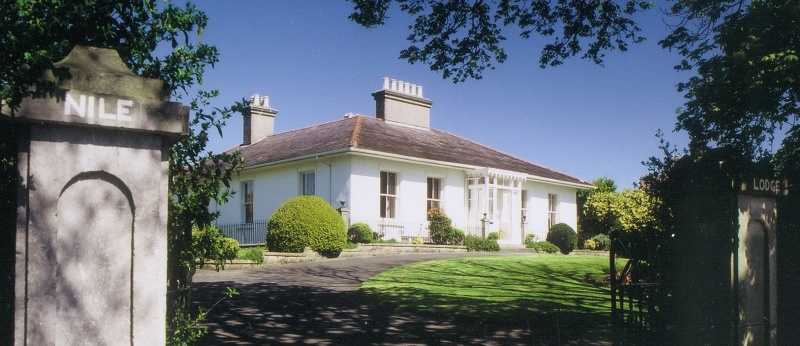
|
| Nirevale House & Mill | At the time of Griffith's Valuation, Abraham Coates was leasing this property from the Stradbrooke estate when the house and mill complex were valued at £50. Contemporary newspaper reports suggest Coates was the agent for the Stradbroke estate. In 1906 the property was part of Lord Ashtown's estate and valued at almost £24. The mill building is still extant and in use. |

|
| Nixon Lodge/Griffith Lodge | A mid-18th century house, named Nixon Lodge on the first edition 6 inch Ordnance Survey map (publ. 1837). It was the home of the Reverend Andrew Nixon and his wife Marianne French of Frenchpark, county Roscommon, in the 18th century. Their son Humphrey had eight children. Nixon Lodge was later known as Griffith Lodge and Griffith’s Valuation records Dorothea Griffith as the occupant. She held the property in fee and the buildings were valued at £16.10.0. Occupied by the Smith family at the beginning of the 20th century. Somewhat reduced in size this house is still extant and occupied. | |
| Noan | Originally the home of the Taylor family, Wilson refers to Noan as the seat of Godrey Taylor in 1786. It was occupied by Natt. Taylor in 1814 and recorded by Lewis as the seat of the Taylor family. In 1840 the Ordnance Survey Name Books refer to Mary Phelps as the proprietor of Noan House. By the mid 19th century it was occupied by the representatives of John Bagwell and held in fee. The buildings were valued at almost £30. The sale rental of 1853 records James Chadwick as tenant on a seven year lease. A lithograph of the house is included. Occupied by Dr Armitage in the 1870s who owned over 2,000 acres in the county. It is still extant and occupied. |
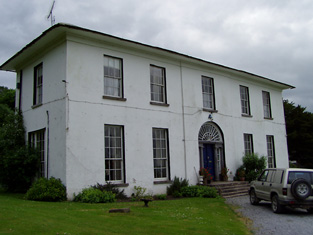
|
| Nohaval House | Baldwin Sealy owned this unoccupied property at the time of Griffith's Valuation, when it was valued at £9. Lewis refers to Nohaval House as the seat of W. Hungerford in 1837. A house still exists at the site. | |
| Nohaval Turrets | William Whitney held this property in fee at the time of Griffith's Valuation, when it was valued at £20. In 1837 Lewis referred to The Lodge as the seat of W.Whitney. In 1942 the Irish Tourist Association Survey referred to "The Turrets" as formerly owned by the Whitneys but then occupied by a Mrs. Slacock who kept the Warwickshire foxhounds there. This property is still extant. | |
| Normangrove | In the 1850s the house at Normangrove, in the Kinvara area, was being leased by John O'Hara to Charles Higgins. In 1814 it had been recorded as the residence of John Burke and was also listed as a Burke house by Lewis in 1837. In 1906 Miss M.L. Forster held over 500 acres of untenanted land here as well as buildings valued at almost £3. The Forsters had held land at Normangrove at the time of Griffith's Valuation but no buildings. O'Connell states that the house was occupied until about 1914 and it fell into ruin therafter. The entrance and driveway lead to a farmyard and there is no trace of the house now. | |
| Northampton | The townland of Poulnaveigh otherwise Northampton, containing Northampton House, "of modern construction", was offered for sale in the Encumbered estates court in June, 1865. In 1894 Slater refers to Northampton as the residence of Captain Harry de Vere Pery a son of the second Earl of Limerick. In 1906 it was the property of James Brady-Murray and was valued at £31. Northampton House is no longer extant having been demolished in the 1930s. http://www.northamptonns.com/index.php/eng/content/view/full/131 |

|
| Northbrook Cottage | Lewis records Northbrook as the seat of J. North in 1837. The Ordnance Survey Name books note Major Warburton as the proprietor of the townland. The First Edition Ordnance map shows Northbrook Cottage. At the time of Griffith's Valuation, a house in progress in the townland was being leased by Joseph Denham from James McBride and was valued at £3 10s. This house is labelled Northbrook House on the 25-inch map of the 1890s. It is now a ruin. |

|
| Northland | Northland was the residence of Sir A. Dancer in 1814 and of William Smith in 1837. By the time of Griffith's Valuation William Henry Head occupied this house valued at £10. He held the property from Lord Dunalley. The house was demolished by the early 20th century. | |
| Northlands | Northlands, located north of Kingscourt and close to the border between counties Cavan and Monaghan, was the home of the Reverend Dean Adams in the 1830s. In the mid-19th century it had a rateable valuation of £31.15.0. and the Dean held the property in fee. Samuel Allen Adams and family were resident in the early 20th century. This house is no longer extant. | |
| Northlands | Northlands, located north of Kingscourt and close to the border between counties Cavan and Monaghan, was the home of the Reverend Dean Adams in the 1830s. In the mid-19th century it had a rateable valuation of £31.15.0. and the Dean held the property in fee. Samuel Allen Adams and family were resident in the early 20th century. This house is no longer extant. | |
| Norton House | Norton House was the residence of Jasper T. Wolfe, JP, in the late nineteenth and early twentieth centuries. It is still extant. | |
| Norwood | In 1841 the Ordnance Survey Name Books described Norwood as "a good dwelling house occupied by a member of the Minchin family" though Simpson Hackett is noted as the proprietor. Captain David Joyce was resident in the mid 19th century when the house was valued at £15+ and held from Thomas Hackett. This house is still extant. |
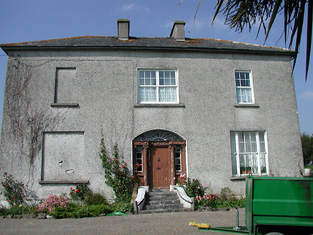
|
| Nunstown | Robert Leeson was leasing a property valued at £5 to Michael Barrett at the time of Griffith’s Valuation. A substantial farm still exists at the site. | |
| Nutfield | A large three storey residence, Nutfield belonged to the Crowe family at the end of the 18th century and up to at least 1814 when it was the residence of Robert Crowe. Wilson refers to it and another house, which he calls Dromquin, as residences of the Crow family. He may be referring to Dromore House. By the mid 19th century Nutfield was the home of Sir Colman O'Loghlen who held it in fee. The buildings were valued at £40. The house is no longer extant. This house was also known as Drumconora. On the Taylor and Skinner map of 1778 it is named Nutgrove. | |
| Nutfield House | Described as Nutley House by Lewis in 1837, Nutfield House was the residence of Edward Ash in 1846. Norman Ashe was leasing a property valued at £11 from Dudley Persse at Glennavaddoge, parish of Kilcloony, at the time of Griffith's Valuation, which appears to be the same property. A house still exists as the site. | |
| Nutgrove | Taylor and Skinner record Nutgrove as a seat of the Donnellan family in 1783 and Wilson refers to it as the seat of Mr. Donnellan in 1786. At the time of Griffith's Valuation Anthony Nugent was leasing a property at Nutgrove or Feebrack, valued at £3 to Thomas Breheny. The site is now occupied by farm buildings. | |
| Nutgrove Cottage | Another Molony house in the townland of Kiltanon, occupied by James Robb at the time of Griffith's Valuation, when it was valued at £20, now a ruin. | |
| Nymph Hall | In 1774 Smith referred to Nymph Hall as "the agreeable seat of Henry Mason". Local sources suggest it was originally built by a member of the Alcock family. By the time of Griffith's Valuation it was part of the Fortescue estate and leased to Augustus Power and John Walsh, when it was valued at almost £9. The house is no longer extant and there are modern buildings at the site. | |
| O'Brennan House | John Keane was leasing this property from Lord Ventry's estate at the time of Griffith's Valuation, when it was valued at £5 10s. Lewis records O'Brennan House as the seat of Edward Gorham in 1837. It is still extant. | |
| O'Donovan's Cove | Timothy O'Donovan held this property in fee at the time of Griffith's Valuation, when it was valued at £12. Lewis recorded it as the seat of T.O'Donovan in 1837. It is described as "in ruins" on the 25-inch map of the 1890s and no trace remains now. | |
| Oak Grove | Home of the Bowen family, occupied by Mrs Bowen in 1814, by J. Bowen in 1837 and by John Bowen in the early 1850s when it was valued at £28 and held in fee. The National Inventory of Architectural Heritage states that parts of the property were rebuilt c.1930 following the burning of the original house in June 1920. In the early 1940s the Irish Tourist Authority noted that it had been lived in by some years by a well-known actress, "Miss Lilly-Elsie" who was married to Major Ian Bullough. It is now known as Oakpark House. |
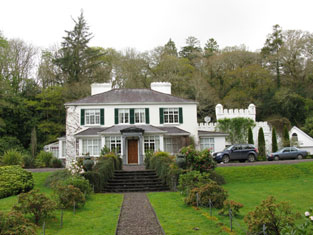
|
| Oak Hill | At the time of Griffith's Valuation, Henry Westropp was leasing this property to Geoffrey Rawlins, when it was valued at £9 5s. It is labelled Oak Hill on the 1st edition Ordnance Survey map but as Oakfield on the 25-inch edition of the 1890s. A house is still extant at the site. | |
| Oak Lodge (Bear) | Leased by Robert Puxley from John L. Puxley at the time of Griffith's Valuation, when it was valued at £6. In 1906 it was the property of Henry L. Puxley and valued at almost £9. There is still an occupied house at the site. | |
| Oak Mount (Kilmeen) | Held in fee by James Gillman at the time of Griffith's Valuation, when it was valued at £17 5s. Lewis referred to it as the seat of J. Gillman in 1837. In 1944 the Irish Tourist Association Survey refers to Oakmount as "a substantial farm dwelling". There is still an extant house at the site. | |
| Oak Park | The Ordnance Survey Name Books refer to Oakpark House as "a good dwelling house, the residence of Mr. Wm. Abernethy" in 1841. It was valued at £13+ and leased by William Abernethy from Colonel Hardress Lloyd at the time of Griffith's Valuation. It was advertised for sale in May 1875 as part of the estate of James Abernethy. A building is still located at this site. | |
| Oakfield | A house occupied by Purefoy Poe in 1814 and by the Reverend Daniel Corcoran in the early 1850s, when it was held from the representatives of R. Constable junior and valued at £15.10 shillings. The Ordnance Survey Name Books mention that there was a garden, fir plantation and planted ornamental ground attached to Oakfield House. Renovated in the 1930s it is still extant and inhabited. |
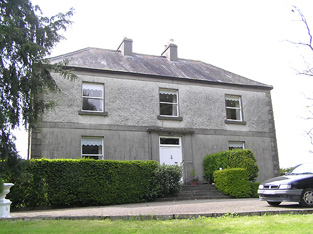
|
| Oakfield (Tulla Lower) | In 1786 Wilson refers to Oakfield as the seat of Mr. Waller. By the time of Griffith's Valuation this house is part of the Massy estate and valued at £9. It is still extant and part of a large farm. | |
| Oakfield House | Lord Edward Chichester was occupying this property at the time of Griffiths Valuation in the 1850s. It was leased from the Ecclesiastical Commissioners estates and valued at £60. The National Inventory of Architectural Heritage suggests that it was built in the eighteenth century and served as the Church of Ireland Deanery for Raphoe for many years. It was later acquired by the Butler Stoney family. In 1906 it was owned by Captain T. Butler Stoney and valued at £45. Oakfield demesne is open to the public. |
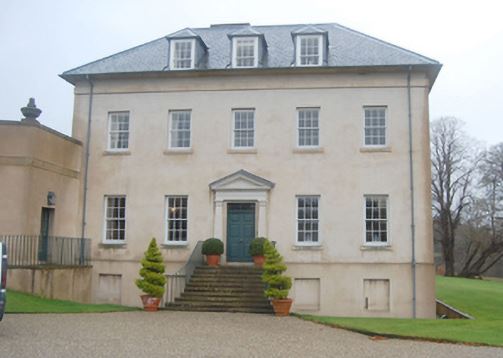
|
| Oakfield House (Sligo) | ||
| Oakfield House (Sligo) | In 1786 Wilson notes a house close to Cloverhill House as the seat of Mr. Deboots [?]. This may be Oakfield House. At the time of Griffith's Valuation, this property was leased from Captain Richard Gethin by Joseph Holmes. It is described as a herd's house and was valued at £3 10s at the time. An extensive farm is still extant at the site. | |
| Oakhampton | In 1786 Wilson mentions Oakhampton as the seat of Joseph "Phelps". John Philips was resident here in 1814 and S.W. Phillips in 1837. Lewis writes that it was the property of Lord Bloomfield. In 1840 the Ordnance Survey Name Books record Oakhampton as " a good dwelling house, the residence of Mr. S. Phillips". The Reverend Anthony Armstrong was the occupant at the time of Griffith's Valuation, holding the property from Lord Bloomfield. The buildings were valued at £25+. Reverend Anthony was still resident in the 1870s when he owned 504 acres in county Tipperary. Reverend A. Armstrong was rector of Killoscully and, in 1835, married Anna Going of Ballyphilip. Oakhampton is still extant. |
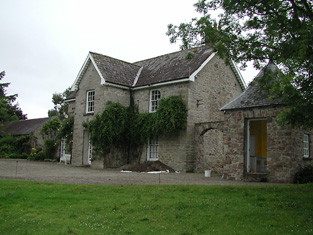
|
| Oaklands | William Ryal was living at Oakland, Clonmel, in 1814 and Mr Bagwell in 1837. Colonel Phipps was resident at the time of Griffith's Valuation, holding the house valued at £49.10 shillings from John Bagwell. Still occupied as a residence. |

|
| Oaklands | A one storey 18th century house on the Hickman estates occupied by William Henn in 1814 and by R. Hunt in 1837. The residence of the Bennett family from at least the mid 19th century and sold by the Misses Bennett in 1929. | |
| Oakley Park | At the time of Griffith's Valuation, John Cunningham was leasing a house valued at £13 at Gowil, parish of Lickmolassy, from Anne Shewbridge. This appears to be the house known as Oakley Park, occupied in the 1870s by the Pigot family. It is still extant and occupied. |

|
| Oakmount | Built post 1838 and occupied by Edward Kelly at the time of Griffith's Valuation when the house was valued at £9. A house is still extant at the site. |

|
| Oakpark (Kilmacrenan) | In the 1850s William Wray was occupying Oakpark when it was valued at £21. The National Inventory of Architectural Heritage suggests it was built at the end of the 18th or beginning of the 19th centuries. It may have been built by the Wray family after they left Castle Wray. Oakpark is still extant and occupied. |
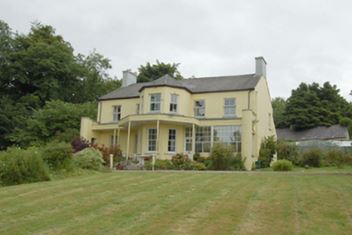
|
| Oakpark or Collis-Sandes House | Maurice Sandes was in possession of this property at the time of Griffith's Valuation, when it was valued at £60. It is labelled as Oakpark on the 1st edition Ordnance Survey Map. In 1837 Lewis recorded Oakpark as the seat of John Bateman. Bary writes that, Killeen, the original house at this site, was a late seventeenth century house. It was followed by Oakpark, built by John Bateman in the 1820s. This is the house mentioned by Wilson in 1786 as the seat of Rowland Bateman. Maurice Sandes purchased the estate in the late 1840s and built the later Oakpark House c.1857. In 1906 this house was owned by Falkiner Sandes and valued at £112. The house was sold in 1922 and is now used as offices. |
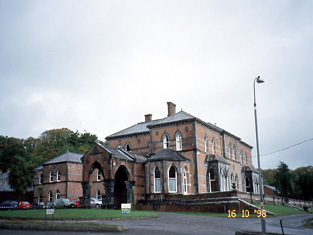
|
| Oakport | Oakport was the home of the Reverend William French, fourth son of John French of French Park, in the early 18th century. At the time of Griffith's Valuation, Oakport House, the property of Thomas William Goff, is recorded as "unoccupied". A house is still extant at the site. | |
| Oatfield | Oatfield House, owned by John Longworth , was vacant at the time of Griffith's Valuation. Earlier, in 1837, Lewis had recorded it as the seat of Major Lynch even though this house had been in the possession of the Longworth family since at least 1814. The Ordnance Survey Field name books also record it as the residence of Major Lynch. In 1783 Taylor & Skinner and in 1786,Wilson, both recorded Oatfield as a property of the Brabazon family. By 1906 it was the property of Edward Longworth. The original house is not extant at the site now. |

|
| Oatlands | Built in the 1840s or 1850s and located on the side of the road, Oatlands was the residence of William Rogers at the time of Griffith’s Valuation. He held the property in fee and its rateable valuation was £11. In 1901 Margaret Rogers, a widow, lived at Oatlands with her daughter’s family, the Gaffneys. in 1906, Margaret J. Gaffney was recorded as the occupier, when the building had a rateable valuation of £14. Home of the O’Reilly family in 1911and still extant. | |
| Oatlands | In 1837, Lewis refers to Oatlands as "the handsome mansion of Captain Knolles" and that their original house at Killeigh was in ruins. At the time of Griffith's Valuation the property was held in fee by Thomas Walton Knowles, when it was valued at £35. There is still an extant house at the site. | |
| Oatlands House | The residence of the O'Dowds of Bunnyconnellan until the sale of their estate in 1854 when it was bought by Charles Downing and leased to Henry McLoghry. At the time of Griffith's Valuation Downing held it in fee when it was valued at £10. It is labelled Bunnyconnellan Cottage on the 1st edition Ordnance Survey Map but as Oatlands House on the 25-inch edition of the 1890s. This is the name by which it is still known. The Irish Tourist Association file refers to Oaklands House owned by Mr McAndrew in which some of the old O'Dowd house was probably incorporated. The house has been restored and in 2015 was offered for sale. | |
| Odell Lodge/Melrose House | Leased by Rev. Thomas Thurtle from the O'Dell estate in 1851 when it was valued at £18 10s. The National Inventory of Architectural Heritage indicates it was later known as Melrose House. In 1942 the ITA survey noted the property as the Melrose Hotel, formerly Odell Lodge. The survey states that it was built by the Odell family as a summer residence. It is still extant and occupied. |
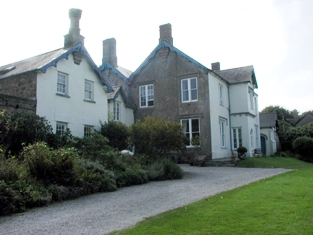
|
| Odell Ville | This house was occupied by John Odell in the early 1850s and held by him in fee. It was valued at almost £14. The house was the residence of William Odell in the 1870s. Home of the Morony and Lloyd families in the late 19th and 20th centuries. Occupied by Wilfrid H. Wilkinson in 1906. It was advertised for sale in February 2009. |

|
| Oghil | Oghil house is recorded in the OS Name Books as being built in the 1740s, though McTernan states that the existing house dates from the late 1830s. At both the time of Griffith's Valuation and in 1906 it was the property of Robert W. Armstrong and was valued at £17. It later served as the parochial house but is now a family home again. See http://www.westsligo.com/culleens/historyoghillhse.htm for more details. |

|
| Oghil | At the time of Griffith's Valuation, Allan Pollok held a property at Oghil More townland, parish of Clonfert, on which a house was in progress, together with a mill and other buildings. The property stood on 368 acres. The mill chimney was demolished during the later twentieth century but many of the other buildings remain. | |
| Oghilly | At the time of Griffith's Valuation, Michael Page was leasing a house at Oghilly, parish of Ballynakill, barony of Leitrim, county Galway from the Clanricarde estate. It was valued at £9. The National Inventory of Architectural Heritage suggests that this house dates from the 1770s. It is still extant and occupied. |

|
| Old Abbey | The home of the Greene family for most of the 18th century. In 1786 Wilson refers to "Abbey" as the seat of Mr. Greene. Subsequent tenants were the Hodges and the Morgans. The Ordnance Field Name Books state that part of the building was very ancient and that a new front had been built in 1805. George Morgan was resident in 1814, William Morgan in 1837 and in the early 1850s, when he held the property from the Earl of Cork. Old Abbey passed to Willliam's daughter, Mrs Wardell, and stayed in the possession of the Wardell family into the 20th century. It is no longer extant. |
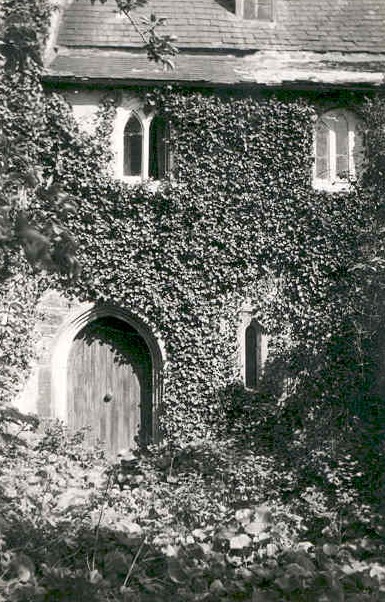
|
| Old Castle | At the time of Griffith's Valuation, Robert Rogers & others were leasing a property at Kingsfort, barony of Tirerrill, to John Gardiner. It was valued at £10. Earlier, in 1786, Wilson refers to Kingsfort as the seat of Rev. Mr. Dodd. McTernan states that this property was originally part of the Mitchell estate and later became a police barracks. It was demolished in the 1990s. | |
| Old Castle (Tracton) | Achilles Daunt was leasing this property to Bartholomew Coveney at the time of Griffith's Valuation, when it was valued at £10. A house and extensive farm now exist at the site. |

